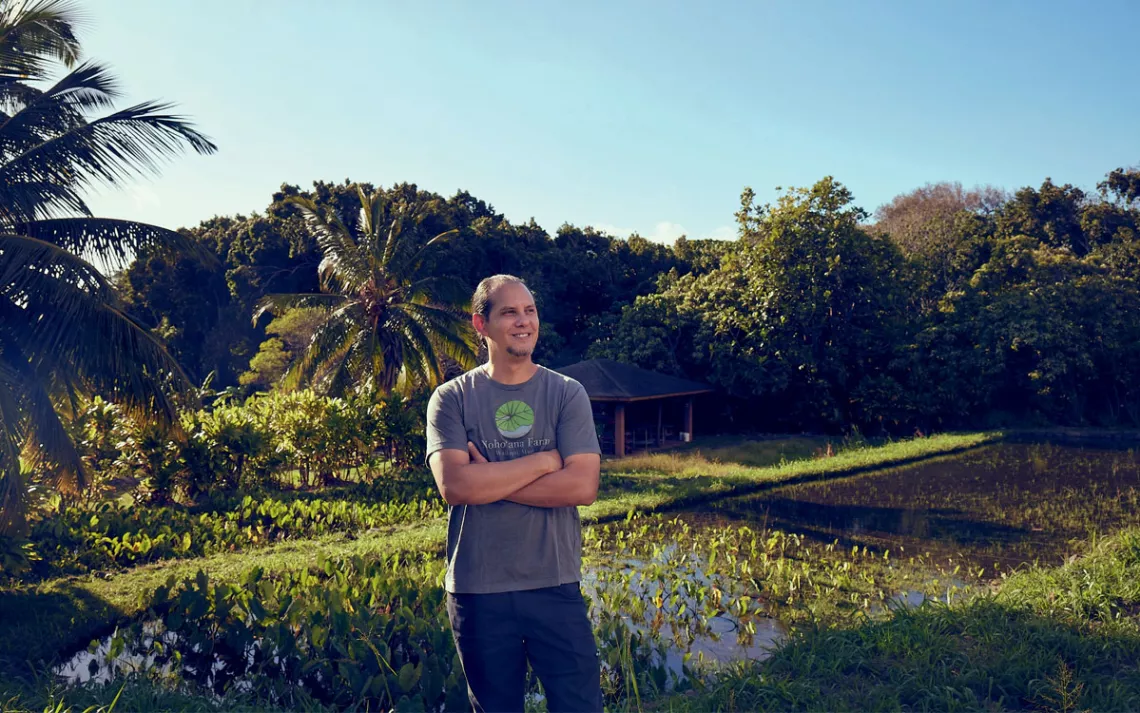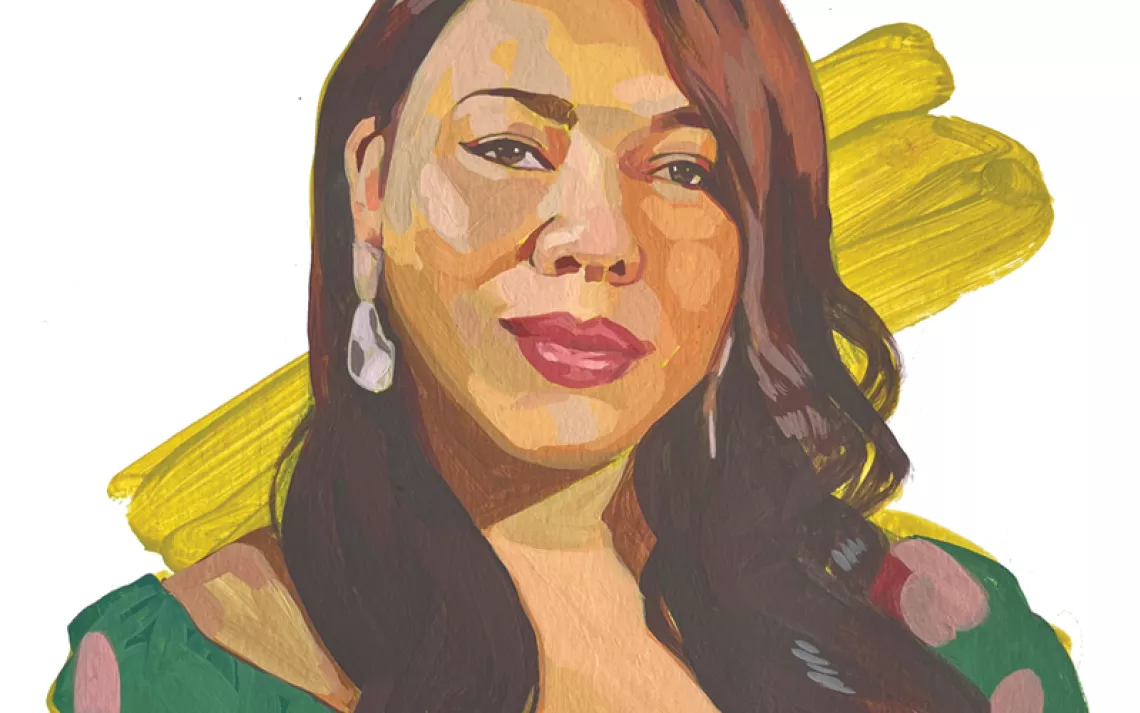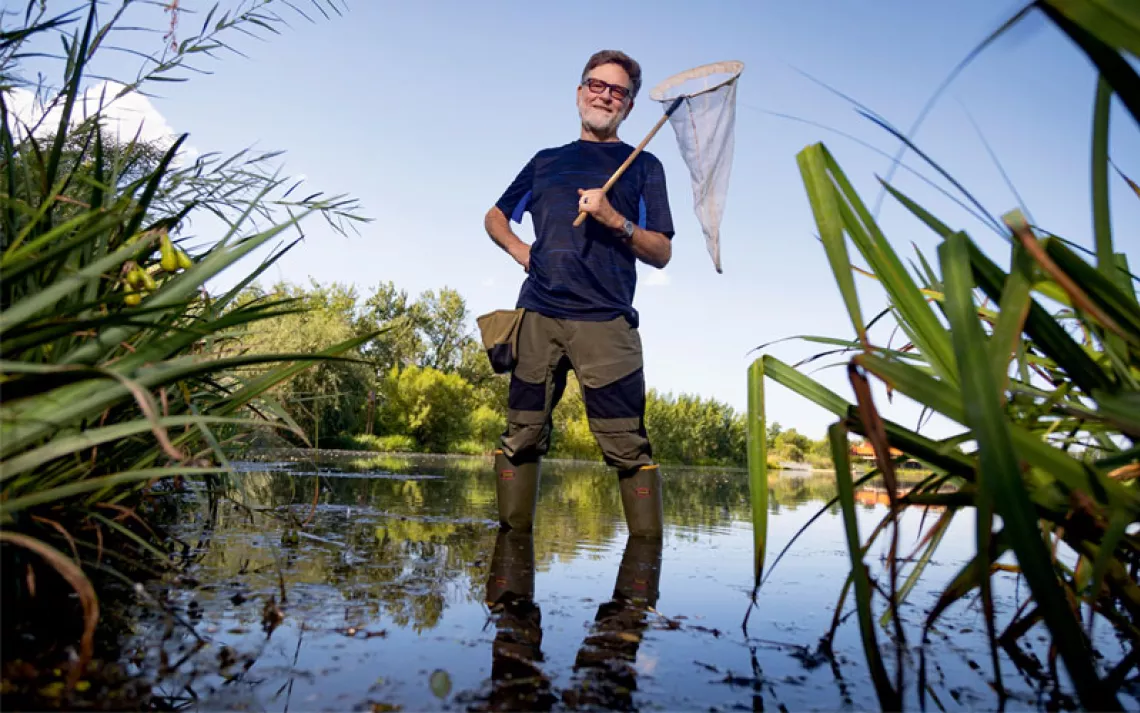Who Owns the Water in Hawai'i?
Hōkūao Pellegrino helped Maui farmers win the biggest water rights case in Hawai'i history

Photo by Gabriel Nivera
In the mid-1800s, before the end of Hawai'i's monarchy, the kingdom granted over 8,000 Native tenant farmers small parcels called kuleana lands. The same law that gave land to common farmers, however, also set the stage for the sugarcane economy and allowed large plantations owned by foreign settlers to divert water from streams for their operations. Few residents of central Maui were left with the ability to farm taro (kalo in Hawaiian) in the traditional way, using neighboring streams to irrigate crops.
The colonial legacy of stolen land and water continued for generations. That changed in 2003, after Hawaiian farmers began a decade-long legal battle against the plantations and the local water company to reclaim their water rights. Hōkūao Pellegrino was one of the farmer-activists who led the fight.
As a child, Pellegrino heard tales of his ancestors' once-abundant wetland taro fields on the southern side of the West Maui Mountains, but he never found evidence of them. Then in 2001, at the age of 19, he unearthed ruins on the family's terraced farmland while on summer break from college on the mainland, where he was studying cultural anthropology and focusing on Native Hawaiian rights. After graduating, in 2002 Pellegrino moved to the island of Hawai'i to study Hawaiian language and history. His closest friend, who came from a venerable taro-farming family, urged him to return to Maui to cultivate taro in the traditional way.
"Less than 2 percent of original awardees of kuleana land still retain ownership. [And of those,] fewer than 10 percent still utilize that land for farming."
Two years later, Pellegrino started Noho'ana Farm on his family's land. He worked with the Waikapū community and farmers from across the islands to help revive the wetland fields. More than 100 neighbors helped clear the invasive plants that had overtaken a rock terrace where taro once grew.
Yet without a water source, wetland taro cannot thrive. To properly bring back the traditional farming practice, Pellegrino had to reconnect with a natural water source.
He started volunteering with the nonprofit Hui o Nā Wai 'Ehā, an Indigenous-led water rights organization. Hui o Nā Wai 'Ehā partnered with Maui Tomorrow Foundation, and together with Earthjustice they unearthed evidence that sugarcane plantations had leached water from Native Hawaiians for generations.
Pellegrino began recruiting families to join a lawsuit against Wailuku Water Company and the now-shuttered Hawaii Commercial Sugar Company. Some were hesitant, distrustful of a colonialist system that had never worked in their favor, but others joined in the lawsuit. In total, he estimates that over 60 families supported the effort.
By 2008, Pellegrino was farming his family's land full-time while working as a sustainability manager at a Native Hawaiian school. He became, he said, a student of the land. A mentor taught him how to construct rock walls from mud, water, and rocks sourced from the local mountains.
"I learned to listen with your ears, observe with your eyes, keep your mouth shut, work with your hands, keep your head down, keep your butt up, and observe the climate," Pellegrino said. "A bad day goes into the planting—it's a cyclical systematic personal ecosystem. This is kilo." Kilo is a Hawaiian term for being present and observing the entirety of your place within your environment.
This attentiveness served Pellegrino's advocacy work. He began translating Māhele documents, finding more proof that streams had been intentionally diverted from Native Hawaiian farmlands. "Less than 2 percent of original awardees of kuleana land still retain ownership," he said. "[And of those,] fewer than 10 percent still utilize that land for farming."
Pellegrino's knowledge "took the fight to a whole new level," said Lucienne de Naie, a central Maui water rights activist who is a board member at Maui Tomorrow. "He's the Energizer Bunny. It's obvious his generation can lead this fight."
In 2010, after years of legal twists and turns, the lawsuit, which argued to amend the stream flow standards to better reflect traditional flows, went all the way to the Hawai'i Supreme Court. The case was heard in 2012, and in 2014 resulted in a mediated agreement between all six parties involved. In 2021, the Hawaiian government established a new water plan aimed at recognizing traditional water rights and protecting stream flows.
Streams have not yet reached their historic capacity, however, and resident farmers are still not getting enough, if any, water. According to Hui o Nā Wai 'Ehā, millions of gallons of public freshwater are still being sold for private profit. Also, the current water system is plagued by crumbling agricultural ditches and insufficient infrastructure. And now Maui is also facing a historic drought.
Yet Pellegrino remains undeterred. Hui o Nā Wai 'Ehā's next fight is to restore the ancient water systems, ensuring that local communities can access the ditches that once served their farms. He is also thinking about what a truly sustainable system looks like and wants to build a certified community kitchen that would include an industrial mill to grind taro into poi, a traditional Hawaiian dish.
A regenerative approach to the land, Pellegrino said, "ensures you are patient, letting land teach you rather than pushing land to the limits. We have been planting life and expecting the ecosystem to change. By listening to the land, doing things as the ancients did, we are learning. We still have a lot to do."
 The Magazine of The Sierra Club
The Magazine of The Sierra Club







